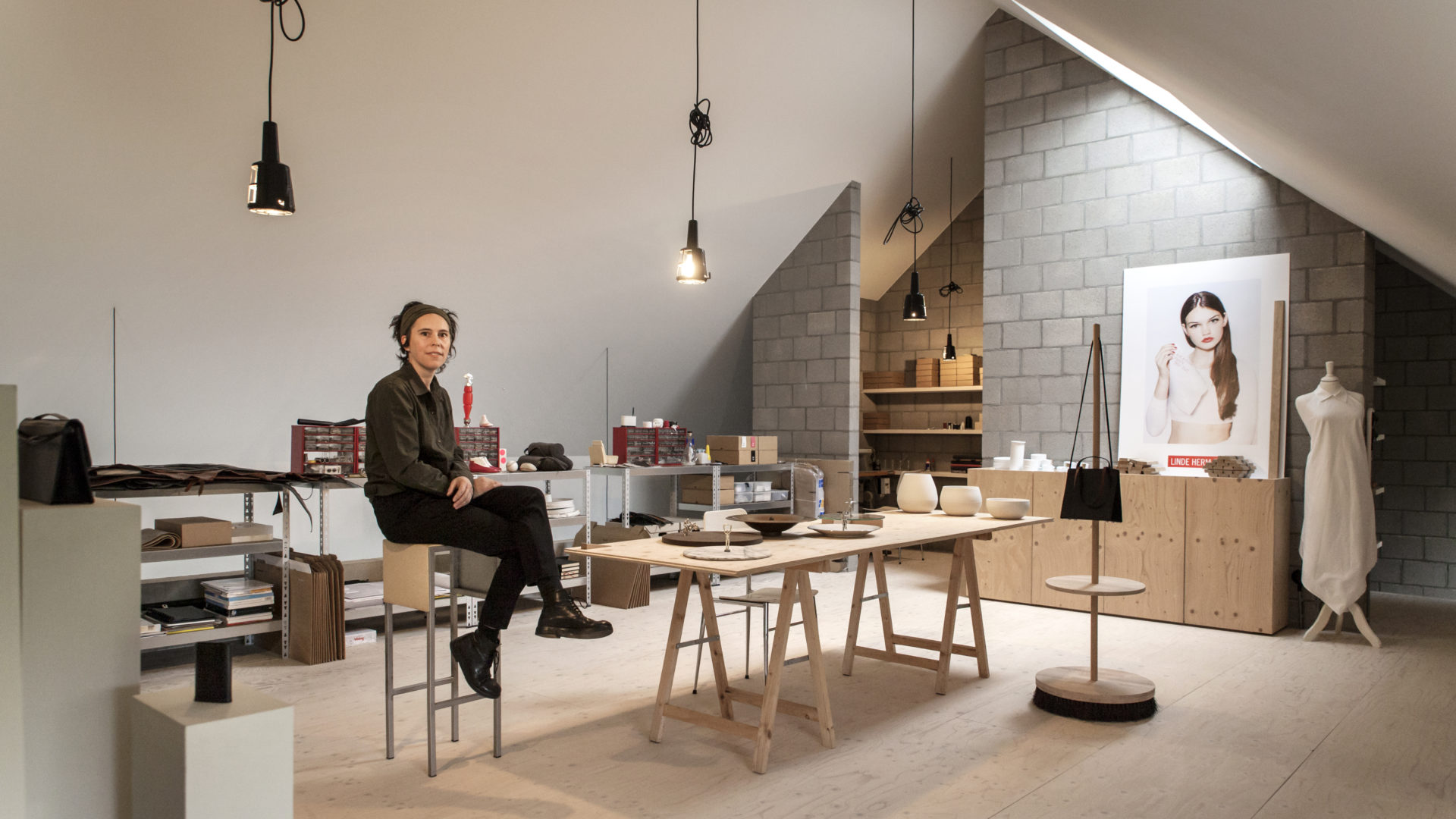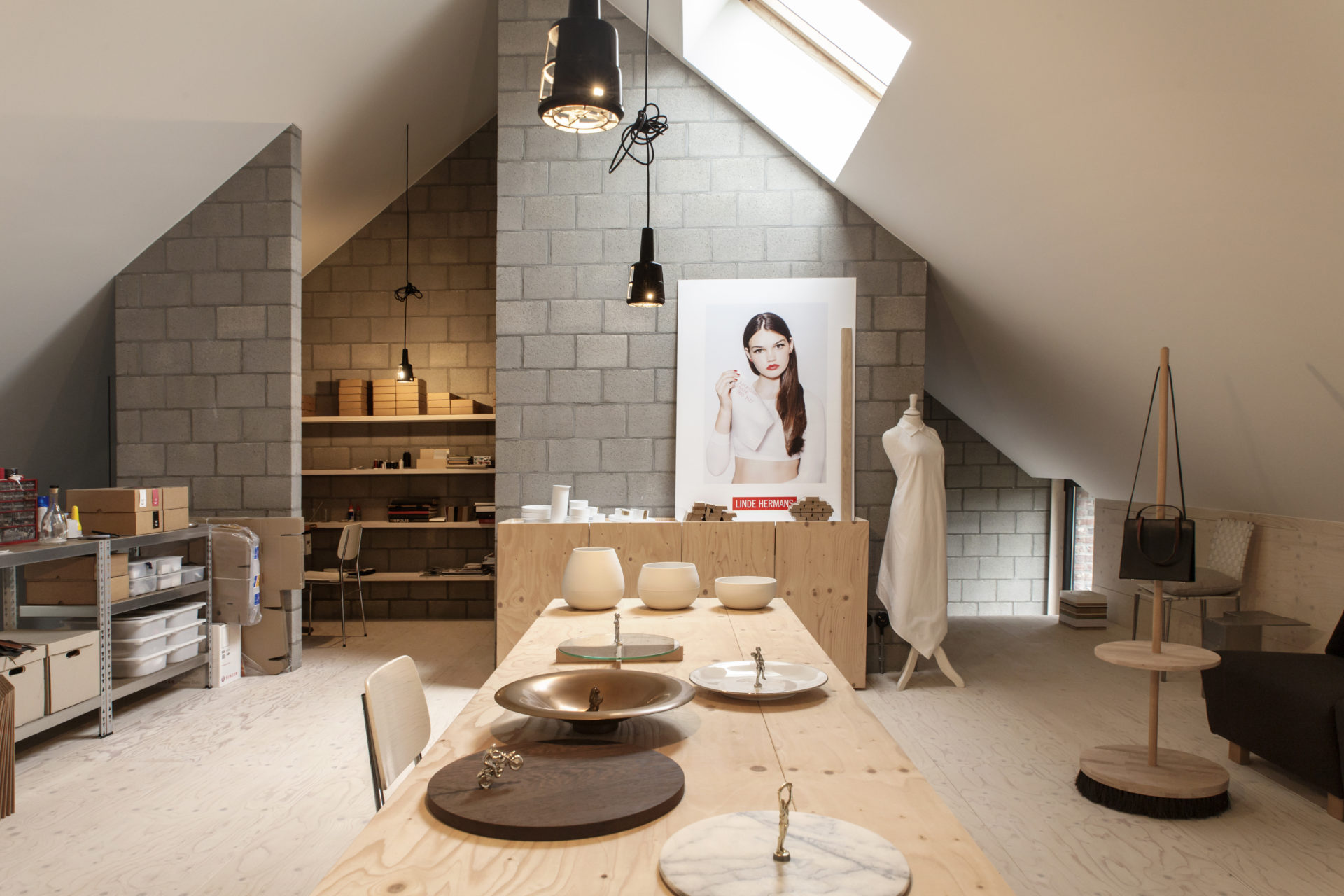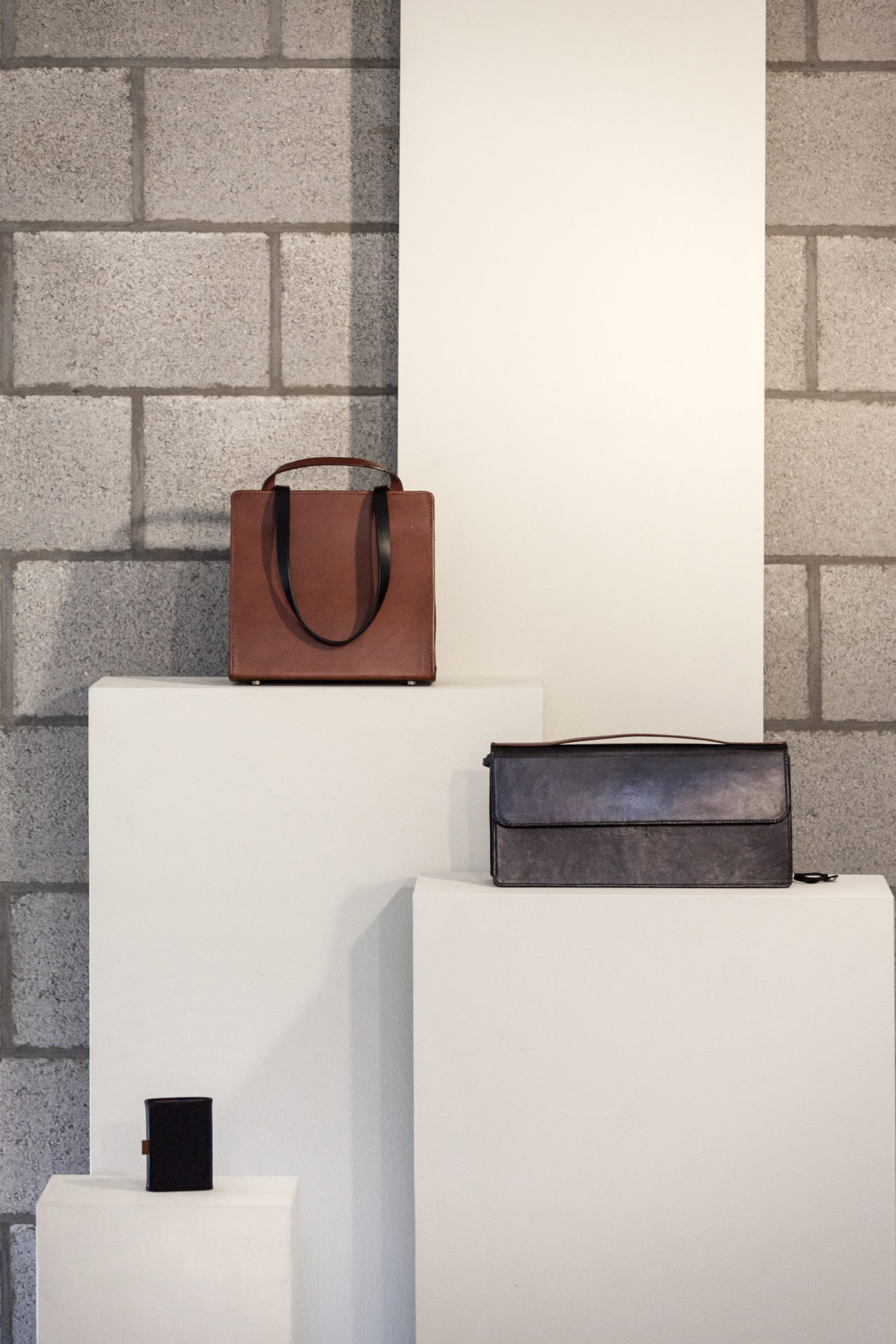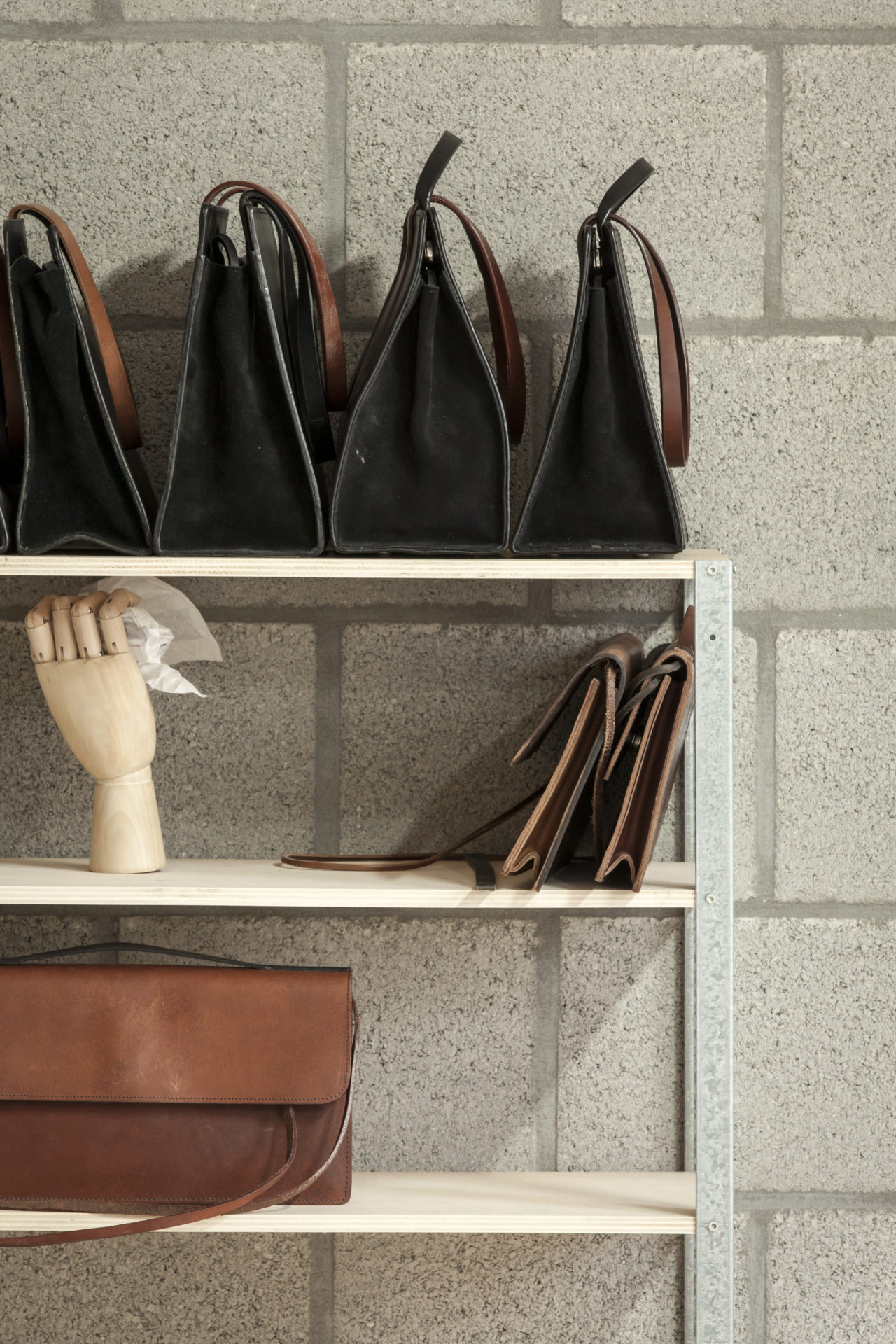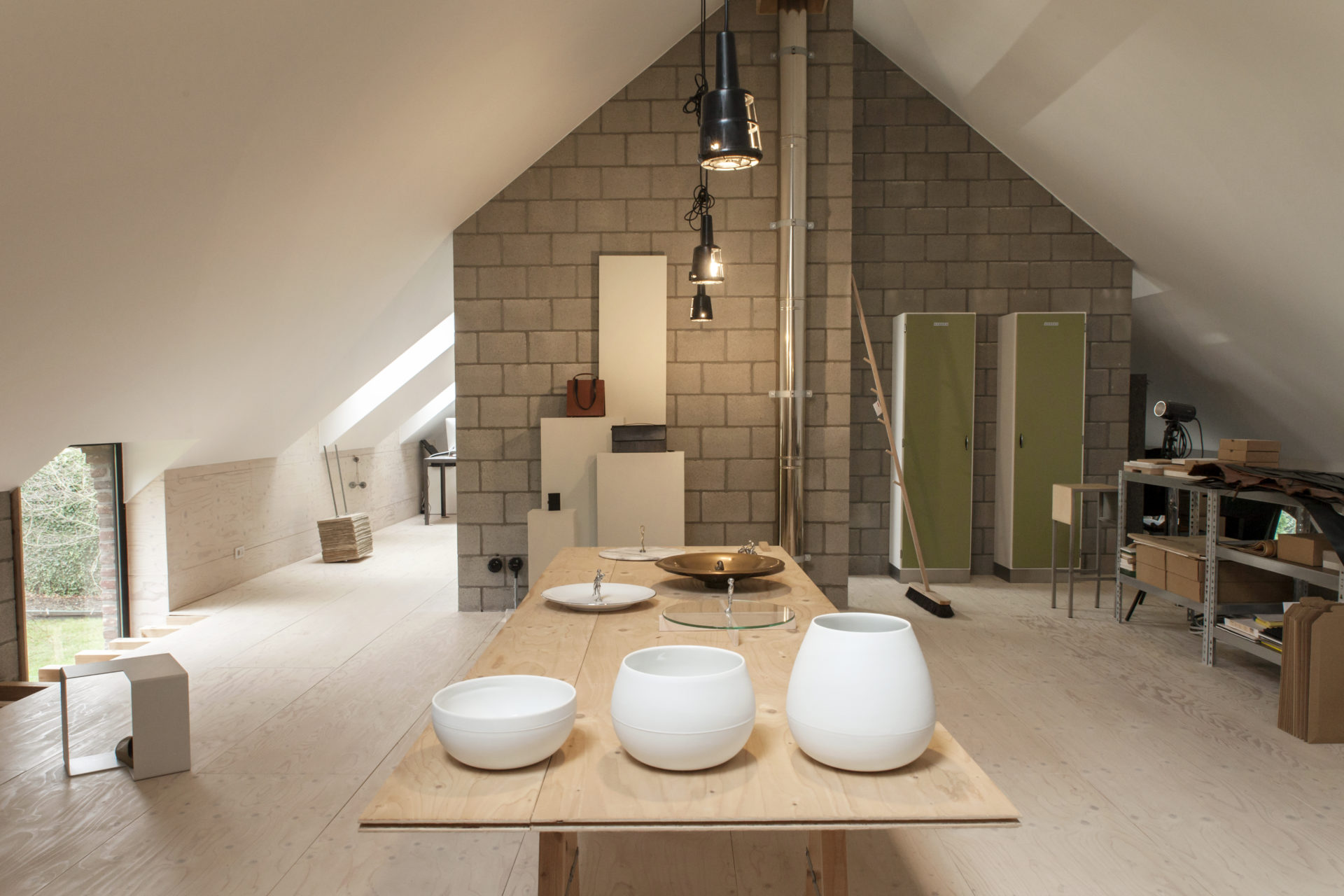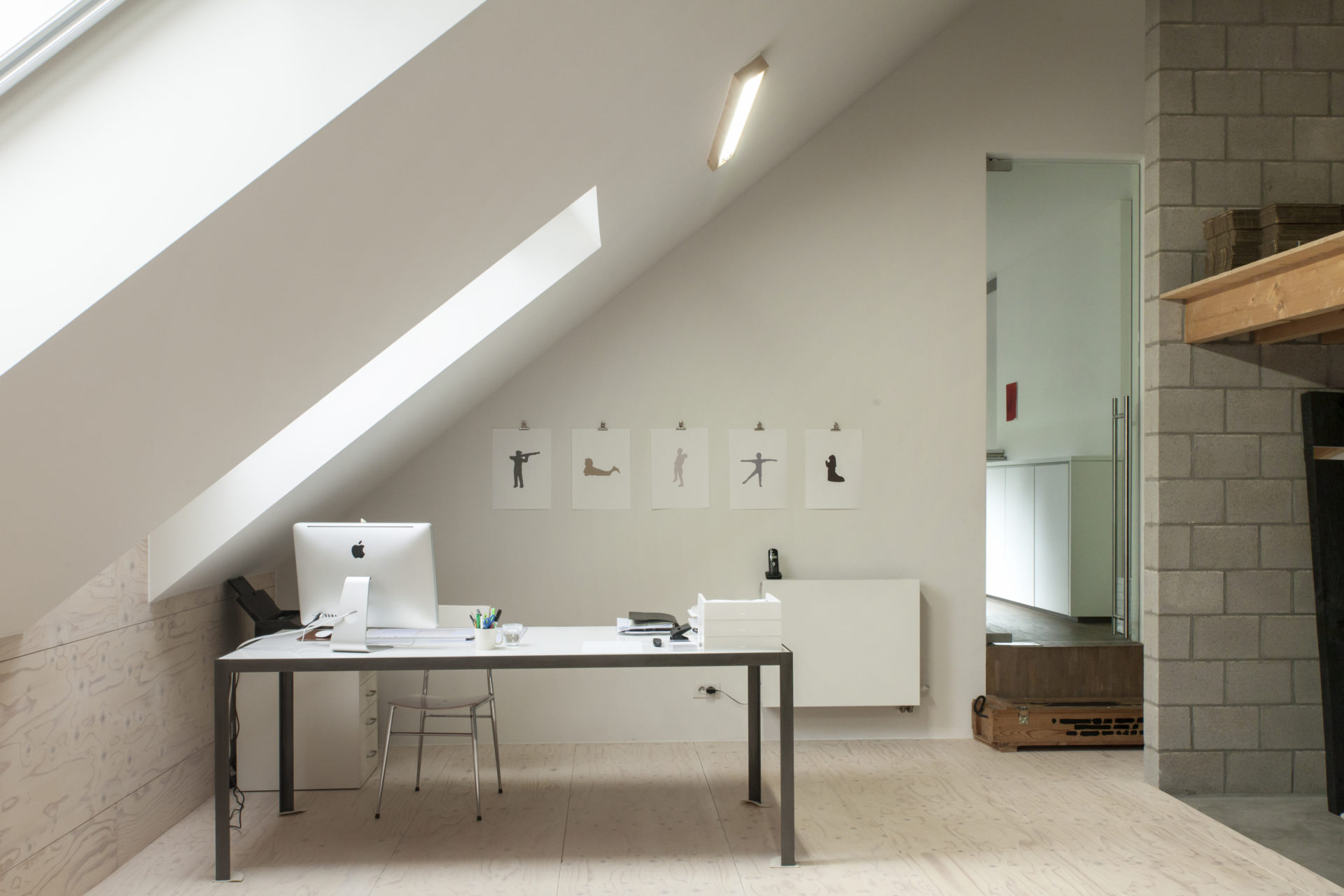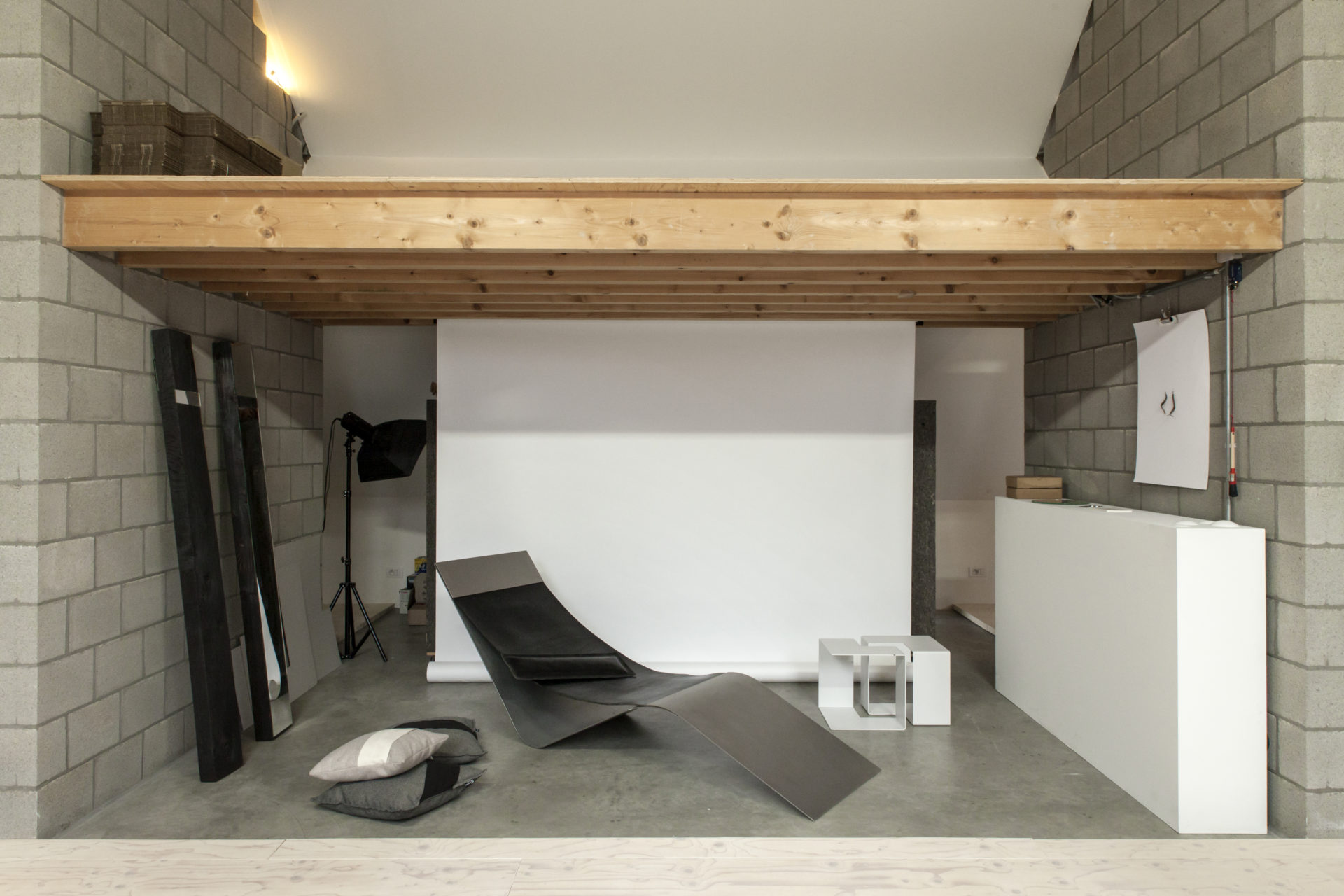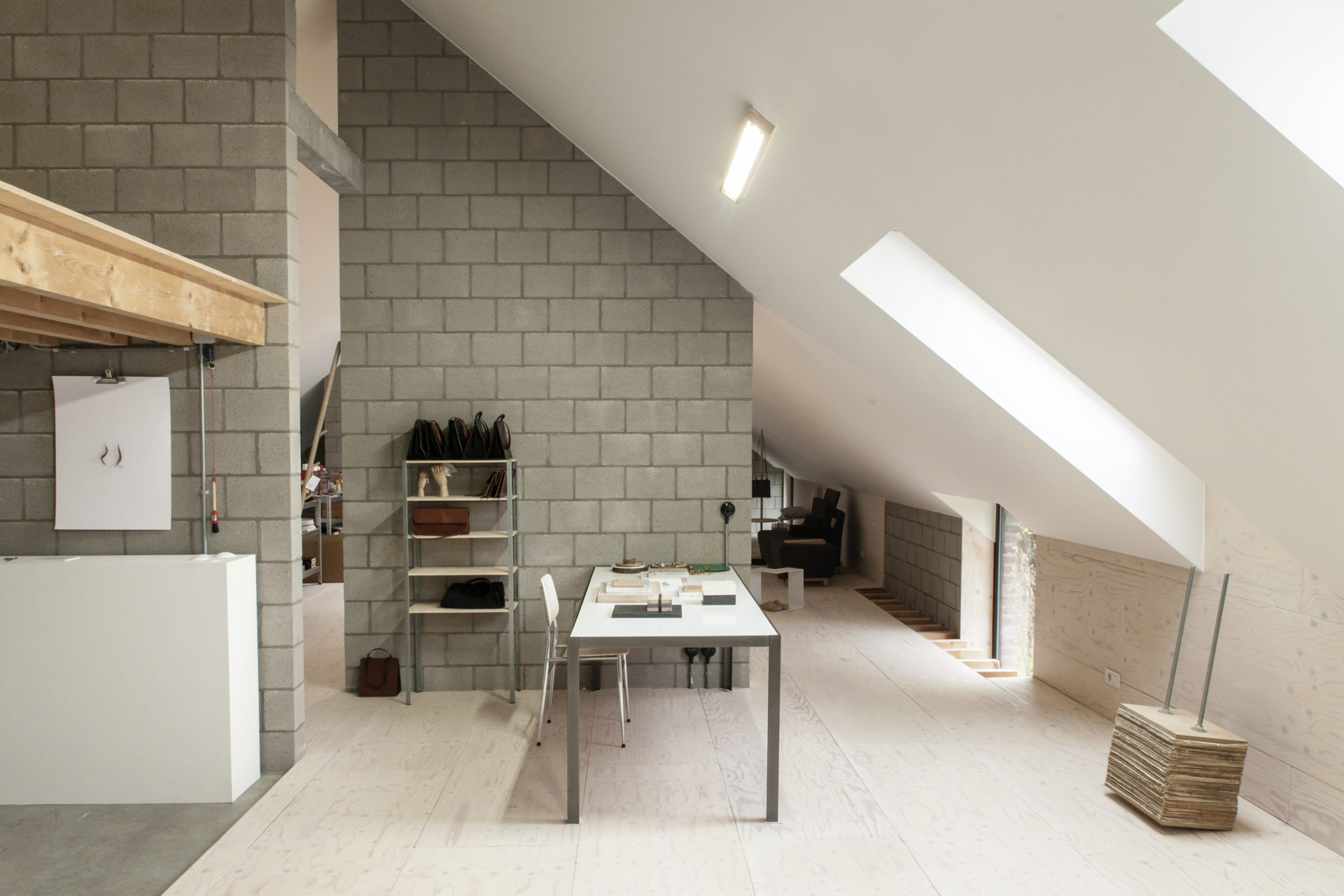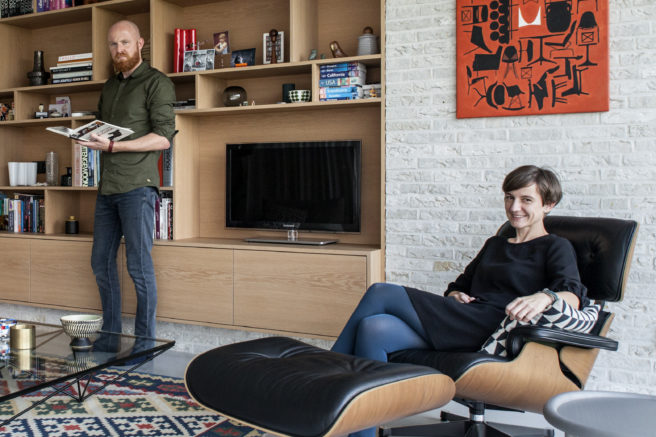Wanderful Loves
In 1997, Linde Hermans graduated magna cum laude as Master in Product Design. After internships with Li Edelkoort in Paris, Jorge Pensi Diseno in Barcelona and at Piet Stockmans’ studio she taught, amongst other things, at the Design Academy Eindhoven. She has also designed street furniture, restyled the Tongeren prison, and launched her own label ‘Rode Schoentjes’. In 2008 she was awarded the Henry Van de Velde Award for Young Talent, and her portfolio is bursting with gems; an exclusive glimpse of Linde Hermans’ studio.
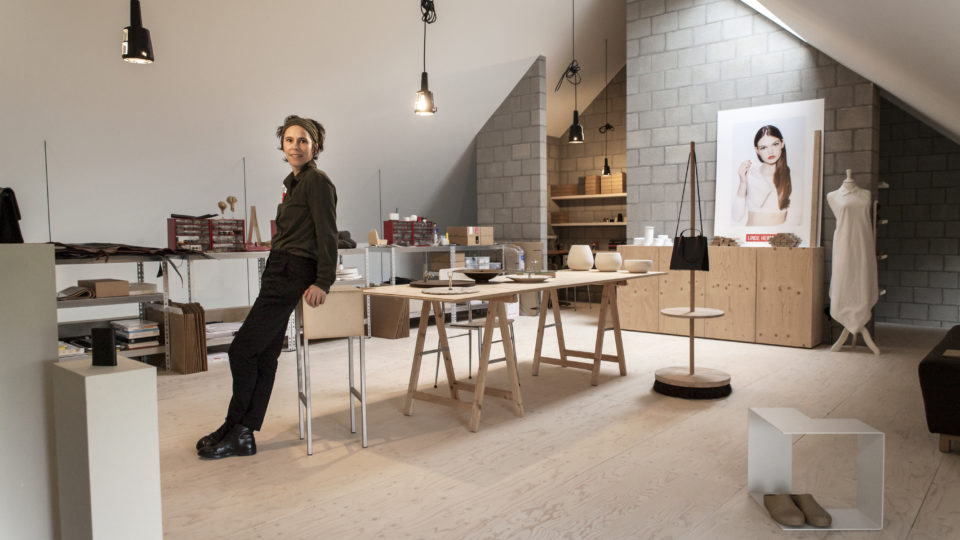
Hand lamps
Loop lamps with an excessively long cable, because we were not sure where we wanted to take them.
Just in case… somebody gets hurt – Liesje Reyskens
An image of the series of portraits photographer that Liesje Reyskens made for the ‘Rode Schoentjes’ handkerchief collection. I devised four sets of handkerchiefs, each of them with three prints. It perfectly represents the handkerchief with the print: ‘Just in case … somebody gets hurt’ in Liesje Reyskens’ signature style.
“James, bedroom please” –multifunctional brush (2015)
One of the pieces from the ‘Personal Assistants’ collection. It acts as a kind of butler or chamberlain that hands you things. Like a chamberlain, it is responsible for the functioning of the household. A personal assistant of the family it works for. The brush is an archetype, a well-known aid, and an appreciated tool. It symbolises action, movement, and ever recurring work.
Tableau Vivant – apron – Rode Schoentjes (2007)
This apron was made from a white cotton table-cloth in combination with a classic starched collar. A poetic apron of which the name ‘Tableau vivant’ refers to a ‘living painting’, which is made from the stains during cooking.
Stool – bar stool
I designed this bar stool myself and have regularly made it on demand. It can be executed in different heights. Although, for the moment, it is still custom-made, I would like to see it going into production sometime.
Jigsaw – side-table – once Vlaemsch (), then Mooz now Moome
This side-table was included in the collection of Vlaemsch () – the market-conquering label founded by Casimir in 2004 focussing on carefully selected industrially produced accessories. The simple shape of the coffee table allows you to pull it up against the sofa and combine it with other jigsaw table pieces to put together a larger coffee table. When Vlaemsch () was discontinued, Inge Vanluyd and Stefan Vanbergen took up the design to distribute it via their label Mooz. Meanwhile it has been included in the collection of Moome, Indera’s sister label for which Inge Vanluyd is the art director.
Collection of accessories for women – Ambiorix
MAX was launched by Ambiorix, the renowned Limburg manufacturer of men’s shoes. It was the first handbag produced by the label, followed by FELIX and the NIX purse in the autumn of 2016. The result of a splendid collaboration with a company that has a lot of expertise and is not afraid to develop new products. I eagerly look forward to developing this even further in the future.
Cupboards with recycled doors from my grandma’s kitchen
The green doors are from my grandma’s kitchen cupboards. The cupboards themselves were too old and they had even turned all yellow, but in this way, I was able to give them a new life. Even though I don’t really think the cupboards fit in here …
Mijmermonologen – Le Chaperon Unlimited (2018)
This is a new work we will be presenting in February 2018. Mijmermonologen (musing monologues) is a set of ten unique dishes, created around an individual in the shape of an old metal figurine I collected. Works that have had me puzzling for several years. But after a visit by Vicky Janssens, the driving force of Le Chaperon Unlimited, it became a story. We asked Petra Thomas to write a monologue of exactly 101 words in her own style for each work.
Drop – vases – Studio Pieter Stockmans
A series of vases, produced at Studio Pieter Stockmans under the name Drop. Piet was my teacher and tutor at college and I got to work with him at the studio a couple of times … Moments that have always stayed with me. Not least because of the special atmosphere and the wonderful scent that fills the air. It fills my heart with pride that I can still work with them today, and that quite a few of my designs are their ‘porcelain shop’. (laughs)
Wooden instrument, a design from my student days
This wooden instrument dates back from the time of my studies in Genk. There are some assignments you never forget, like the design of a ‘balloonmobile’. One of the very first assignments was to make a balloon-powered vehicle that would travel as far as possible. Most of my classmates made a very light vehicle, but mine was entirely made of metal. It was quite heavy, but encountered little resistance, so it raced through the hallways and travelled for 21 metres.
Which came first: the chicken or the egg? – assembly work
An assembled object displaying the discussion regarding the chicken and the egg. Which came first: the chicken or the egg? Hence: A statement to overthrow.
Baseball fun
A test: Applying the way a baseball is wrapped to an amorphous shape, such as a rock. That provides for a lot of familiarity, but a slightly strange sensation too.
Red
I don’t know where my fascination for the colour red came from. It screams at me and attracts me just as much as it repels me. Sometimes, I buy a red garment – though I have learned not to do that more recently – but I never wear it. However, I love to see people dressed in red, because it radiates a huge amount of self-confidence. Red … well … numerous red details often indicate pain or obstacles, a difficulty or an important detail.
Rode schoentjes
I consciously chose the name RODE SCHOENTJES, which translates as ‘red shoes’ for my collection
RODE SCHOENTJES
Stands for childlike fantasy and imagination.
The pleasure of an endless Dance.
The beauty of that pair of red shoes behind glass.
A collection of objects that tell a story or just make you wonder.
Inspired by tales, images, symbols, …
Architecture, design by Peter Firman
The studio’s design is from the architect Peter Firman. We are both active members of the designers collective Het Labo, where we got to know each other better.
Chaise Longue – lounger – prototype (2000)
This chaise longue remains one of my favourite designs. It is a combination of stainless steel and leather. Shaped as soberly as it is graciously, and easy to disassemble for transportation, for example, or to replace the leather. I am completely convinced of this design and its timeless value. I dream of taking it further some day.
Earlocks – earrings (2017)
These earrings are made from strands of hair. I challenge people to cut a piece of their hair – two locks with a minimum length of 12 centimetres – and for a voluntary donation, I send them back as earrings.
Tag – cushions – Moome
These cushions not only provide comfort, the storage pouch also adds an additional function. Ideal for magazines that are lying about, the ever-untraceable remote control, or maybe just to hide your smartphone for a while.
Black Bar – object (2017)
The black bar or censor box takes away the identity. Anonymity is guaranteed by covering the eyes. But the same applies to the opposite: when only the eyes are visible, the face is just as unrecognisable and can fill you with a sense of unease. “What do I show the other, and what don’t I?”… A question that is answered differently in different cultures. The two chosen materials are each other’s opposite. While the black, burnt wood absorbs all the light, the looking glass reflects everything. The mirror symbolises identity.
Storage racks
I use standard metal storage racks for storing prototypes and materials: leather, paper and cardboard …
Coal-shovel
A beautiful small coal-shovel, shaped from a sheet of metal.
Drink mij – ceramics
These two works are made from ceramics with gold, placed on a pedestal of broken wine glasses.
Plaster moulds
Plaster moulds and porcelain prototypes, the results of a cooperation at Studio Pieter Stockmans.
Collection of wooden objects
A handful of simple but beautiful wooden objects. Collecting and developing the collection is the fun part, but maintaining the order and figuring out storage systems is not really my cup of tea.
The Wedge – schaalmodel
This is the scale model of THE WEDGE, a creative seating concept based on – as the name implies – a wedge. A gib and wedge-shaped cushions provide this armchair with ergonomics and modular seating comfort. Some prototypes were produced by Indera and the idea was to make a 3-seater and a 4-seater too, in order to get variation in one long seating element. Alas, it never came to that.
My office
My office, featuring the silhouettes of the metal figurines from the Mijmermonologen on the wall. The graphic figures stand out nicely in this way. They bear a symbolic connotation that we all feel within us: the hunter, the dreamer, but also that which gives us hope, balance and a willingness to help are depicted here.
Weapons trunk stairs, stairs and connection between the studio and private quarters
These stairs to the private area are made from a wooden weapons trunk. I had a hard time with it at first, but the size was right and look, it’s still standing. I did paint over the texts and numbers on it, so that they are no longer readable.
Max – prototypes – Ambiorix
These are the MAX prototypes, the first handbag for Ambiorix. I made the first prototype myself and the five that followed were made by Ambiorix. It takes a lot of time to get from the first idea to a finished product. My patience is put to the test every time.
Noortjes office
This is the office of Noortje De la haye’s, a professional graphic designer and my right hand. She works here part-time. It is great to have someone who complements me, a sounding board to make decisions faster than when I’m on my own.
Een Stam – prototype – Het Stam in Gent.
Stam, the Dutch word for a tree-trunk, is the name of the Ghent city museum. We created a seating unit from old newspapers which the Ghent citizens brought to the museum. We compressed the newspapers into a firm and robust bar that visualises the elementary concept of ‘sitting’. That which was once a tree, the thin paper, is given a new role in the story. But as the years go by, the square shaped paper bar will lose its sharp edges and eventually, faster than a tree-trunk, will disappear again.
